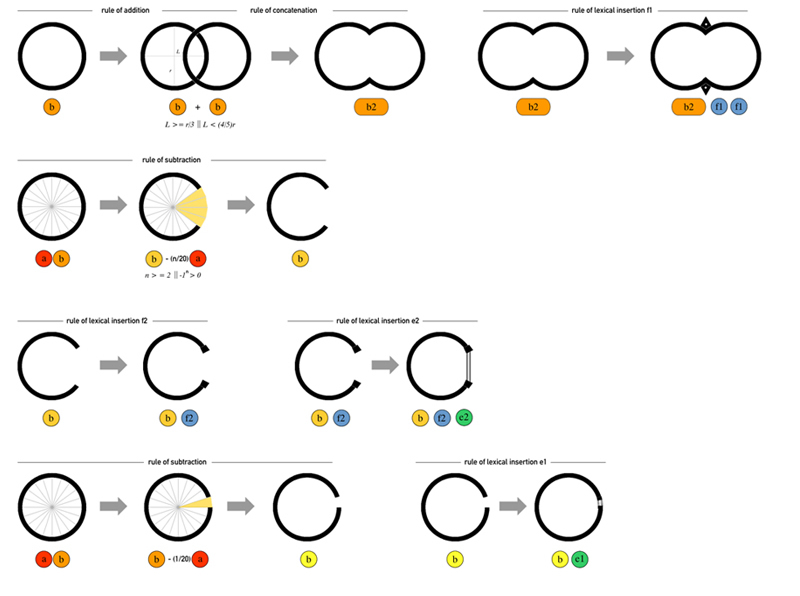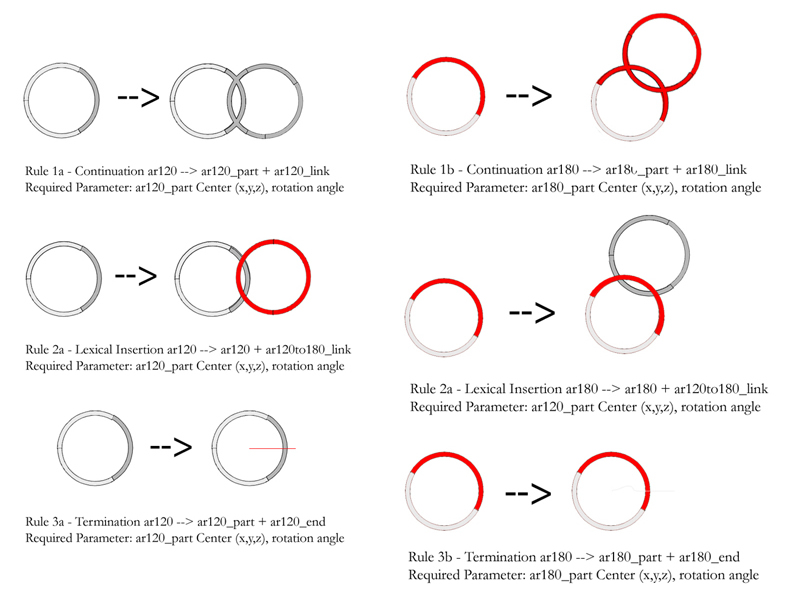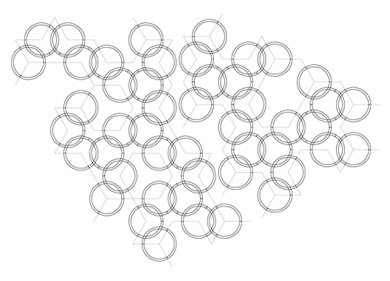The Melnikov Grammar
Speculative Software for Generative Design Exploration
Date: 2008
Keywords: Generative Design, Konstantin Melnikov, Artificial Intelligence in design, Shape Grammars, Rule-based Design
My fascination with the intriguing geometries of Konstantin Melnikov’s architecture and the computational nature of his design process led me to seek to automate it. In Melnikov's designs basic rules of addition, subtraction and repetition of a basic shape configure a well-defined and open-ended formal language. Once encoded in my program these rules produce “Melnikov” designs automatically and non-deterministically while satisfying certain user-defined constraints such as, for instance, a site’s boundary, a series of pre-existences, or the placement of windows seeking the best views. The experiments on 3-D and fabrication show how a simple design language can be explored across scales. I like to think of the Melnikov series as a computational meditation on automation, authorial agency and geometry.
Related
A paper reporting this study selected for presentation at the 3A International Conference of Computer Graphics and Artificial Intelligence, Athens. 
Melnikov's use of cylinders to articulate space is a salient feature of his architecture. Most of his designs were not built, but the house he built for himself stands as a summary of some of his design principles.These are the component shapes of Melnikov's house, and the simplification of the architectural elements that led to the definition of the basic Melnikov lexicon.
These elements can be organized in a finite number of ways, given by strict rules of transformation. These rules can be applied on the elements, allowing for the generation of Melnikov-house like forms. An example of a derivation of the grammar will provide a variation on Melnikov's house while maintaining some essential features.
Taking a broader sample of Melnikov's work, a larger repertoire of geometrical behaviors is visible, specifically, the existence of 120 degrees and 180 degrees connections between cylinders. Some detail in the architectural precision of the grammar is sacrificed in order to incorporate these new beahviors in a new simpler, and yet more open, grammar.The additive process of Melnikov Architecture works can be rationalized. Above, 120 and 180 degrees addition of cylinders. In order to implement this grammar in a computer program I combined the two main geometric principles of Melnikov's Architecture; the connection of cylinders divided in three and two sections respectively. This grammar takes distance from the specific resolution of the Melnikov House, to provide a set of rules and shapes that relate to Melnikov's architecture in a more general way. Once the literal types, or simpler elements are defined, the relationship between these must be equally defined. The compound Types, scripted in AutoLisp, define these relationships. Each compound type can be transformed in a finite number of ways. These transformations typically substitute the compound for another element that in turn can be transformed in a finite number of ways. This way a grammar can have rules of termination, continuation, change, spreading, etc. These rules are implemented in AutoLisp using NITROS, a n Autocad plugin developed by Takehiko Nagakura.
Random propagation of the Melnikov grammar looks like this:
To allow the grammar to "intelligently" occupy a given space in an autonomous way, a set of NITROS functions are implemented to constrain the propagation of the elements to avoid overlapping and / or collisions. These functions evaluate the position of all shapes before performing a new transformation, and prevent it if the new element overlaps or touches an existing one.


To allow the grammar to "intelligently" occupy a given space in an autonomous way, a set of NITROS functions are implemented to constrain the propagation of the elements to avoid overlapping and / or collisions. These functions evaluate the position of all shapes before performing a new transformation, and prevent it if the new element overlaps or touches an existing one.

As a result, more 'site-specific' Melnikov designs start to appear:



daniel cardoso all rights reserved



